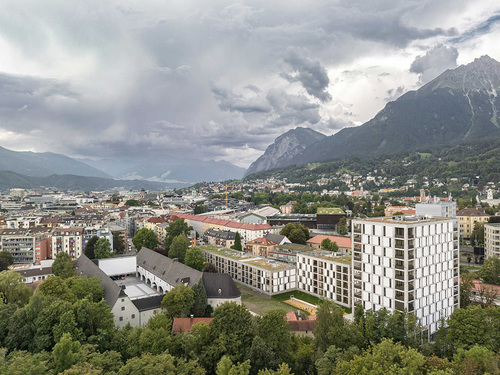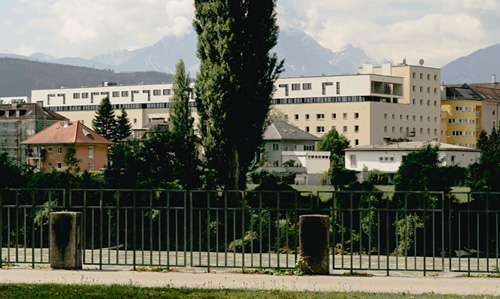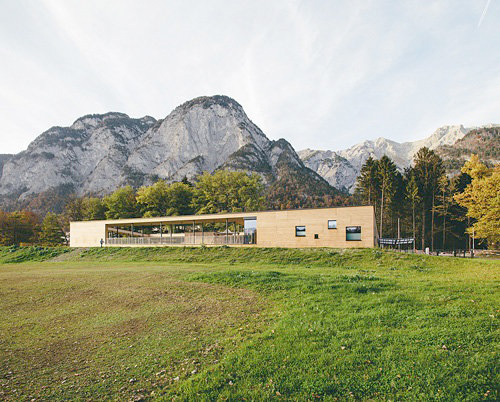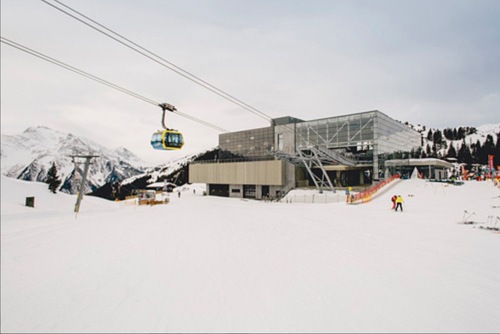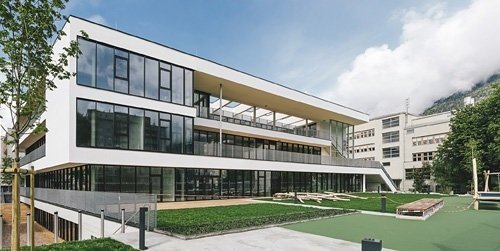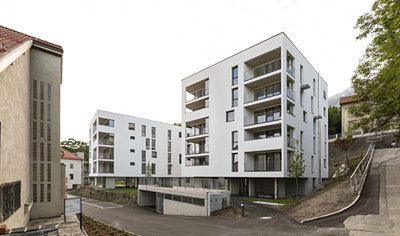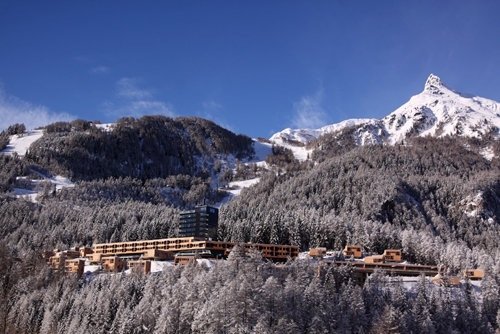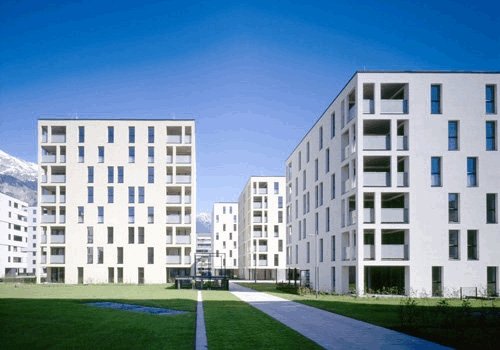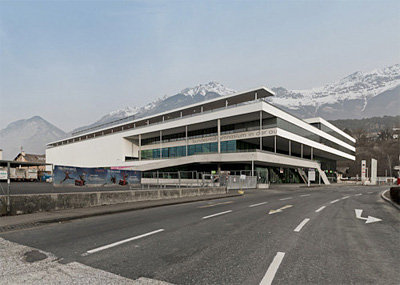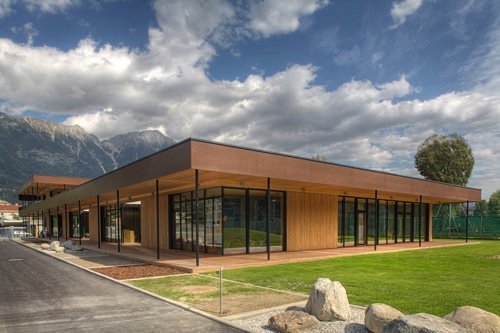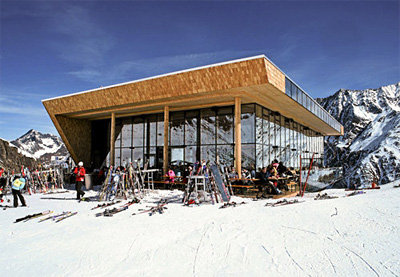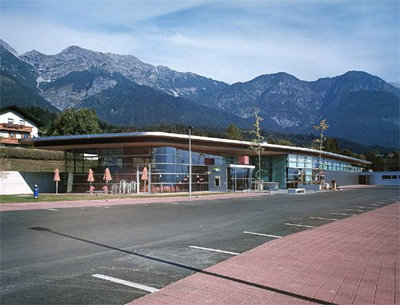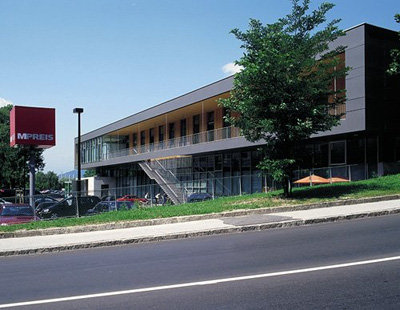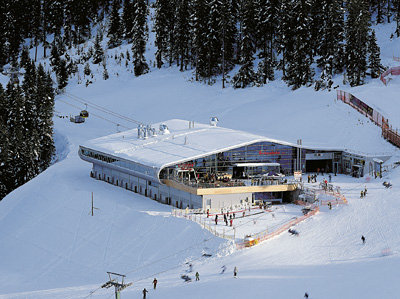Residential development "Am Zeughaus”
Architecture: HERTL.ARCHITEKTEN, reitter_architekten (2021-2023) Builder-owner: Kapuzinergasse Projektentwicklungs GmbH Open to the public: partially TIP: You can immerse yourself in Tyrol's history in the neighbouring "Zeughaus
Located next to the Zeughaus, the residential building was designed to provide an orderly response to the heterogeneous development around the historic courtyard and to clearly define the park along the Sill. As a result, three buildings of varying heights form a staggered arrangement, the striking façade design works to promote a contained environment and sense of neighbourhood. Efficiently organised apartments in different typologies and differentiated open spaces contribute to the quality of the residential building.


